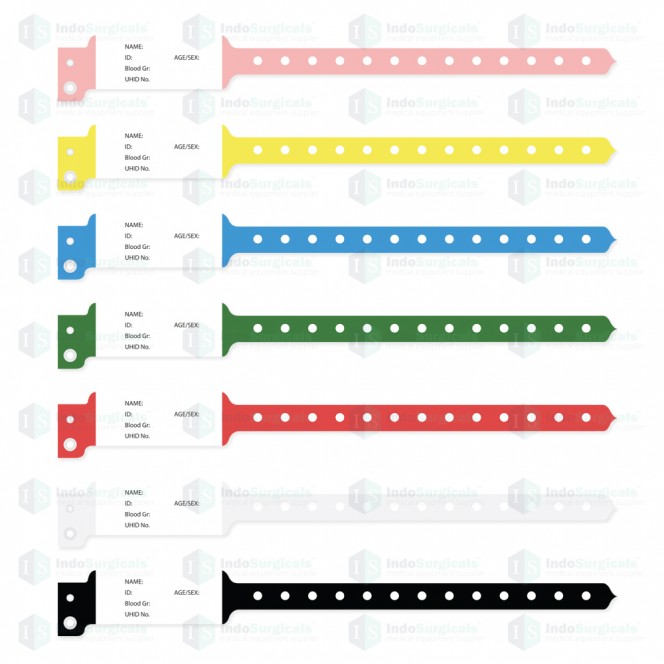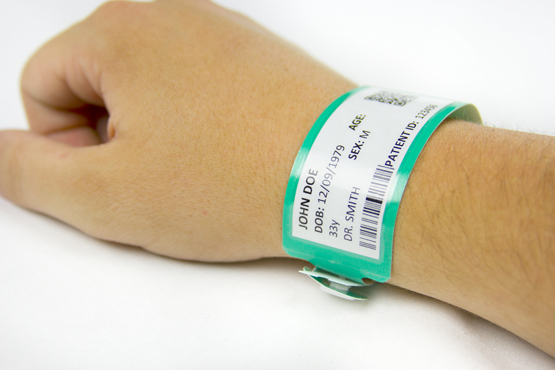How a Patient Identification Band Improves Patient Support and Reduces Dangers
How a Patient Identification Band Improves Patient Support and Reduces Dangers
Blog Article
Exploring the Various Sorts Of Patient Identification Band Made Use Of in Clinical Facilities
In the intricate world of healthcare, the important function of Patient Identification bands often goes unnoticed. These bands, differing from basic paper wristbands to sophisticated RFID bands, create the backbone of Patient security protocols, making certain precision in Patient Identification.
Comprehending the Value of Patient Identification Bands
While they might seem like plain devices, Patient Identification bands play an essential function in medical facilities. These bands offer as a crucial tool for verifying Patient identification, preventing medical mistakes connected to misidentification. Patient Identification bands additionally help in enhancing administrative tasks, ensuring exact record-keeping and payment.
Traditional Paper Wristbands: Their Usage and Limitations
Conventional paper wristbands have actually been a staple in Patient Identification across numerous clinical facilities. While their usage is extensive, they harbor particular restrictions that may influence their efficiency in Patient management. This area will concentrate on the extent of their application and the intrinsic disadvantages associated with their usage.
Paper Wristbands: Usage Extent
In the world of Patient Identification, paper wristbands have long held a critical role. These bands are generally utilized in outpatient setups, where the Patient's stay is short-lived. Regardless of innovations in innovation, the simple paper wristband continues to be a cost-effective and trustworthy service for Patient Identification in numerous health care situations.
Limitations of Paper Wristbands
Despite their extensive usage, paper wristbands are not without their drawbacks. In enhancement, paper wristbands usually do not have the technical abilities of even more modern-day alternatives, such as barcoding or RFID chips, restricting their functionality to just presenting composed details. Paper wristbands can trigger pain or skin irritation to some individuals, especially when used for prolonged periods.
Barcoded Wristbands: Improvements in Patient Identification
While Patient Identification has long been a crucial facet of healthcare, the introduction of barcoded wristbands symbolizes a substantial leap onward. These bands leverage the simplicity of barcoding innovation, permitting for Patient info to be quickly scanned and accessed. They improve the rate and accuracy of Patient Identification, lowering the risk of clinical errors related to misidentification.
Superhigh Frequency Identification (RFID) Bands: an Action In The Direction Of Futuristic Medical Care
The advancement of Patient Identification bands has produced the development of Radio Frequency Identification (RFID) Bands (patient identification band). These ingenious gadgets present key benefits for health care facilities, offering an extra efficient and technologically progressed means of Patient Identification. The application of RFID in healthcare is a significant action in the direction of a much more futuristic approach to Patient management and safety
Recognizing RFID Bands

RFID Bands: Secret Benefits
Embracing a future where technology and health care merge, superhigh frequency Identification bands supply numerous vital benefits. Mainly, these bands improve Patient safety and security by supplying accurate, instantaneous Identification, therefore lowering clinical errors. RFID bands can save a huge amount of Patient information, consisting of medical history and allergic reactions, allowing personalized treatment. They likewise improve management tasks, as the automated data access replaces manual procedures, improving performance and lowering documents. RFID bands offer real-time tracking of individuals, vital in high-risk settings such as surgery or extensive care. These bands are resistant and resilient to ecological factors, making sure regular functionality. On the whole, RFID bands represent a considerable advancement in Patient Identification modern technology, benefiting both clients and medical care service providers.
Applying RFID in Medical Care
As we step into a technologically advanced era, the implementation of RFID bands in medical care comes to be significantly essential. These bands provide a seamless way to track and identify people, guaranteeing their safety and security and boosting efficiency in treatment procedures. RFID bands provide numerous advantages over traditional Identification approaches. They can keep a huge amount of data, including the Patient's case history and therapy strategies, which can be quickly accessed by doctor. This data helps medical professionals make informed choices pertaining to the Patient's treatment strategy. In addition, RFID bands minimize medical errors by giving precise Patient Identification, which is important in avoiding misdiagnosis or wrong medicine administration. Therefore, the application of RFID bands is a significant action towards improving Patient safety and medical care shipment.

Color-Coded Wristbands: Helping in Quick and Accurate Diagnosis
In read more the dynamic environment of a clinical center, color-coded wristbands have arised as important tools for swift and precise Identification of a patient's medical problem. These wristbands, put on by individuals, carry particular shades that match to different medical conditions or standings. This system is designed to use instant aesthetic signs to healthcare service providers, boosting Patient safety and care high quality.
Methods for Efficient Application and Monitoring of Patient ID Bands
Achieving optimum usage of Patient Identification bands necessitates a well-structured approach for their implementation and monitoring. Patient education is additionally vital; clients must comprehend the purpose of the bands and the demand for their constant wear. It's crucial to have a backup strategy in area, such as barcode scanning or biometrics, to guarantee that Patient Identification is never ever compromised.
Verdict
Patient Identification bands are critical in clinical facilities to make sure safety and accuracy. Traditional paper, barcoded, RFID, and color-coded wristbands each hold special benefits, ranging from cost-effectiveness to innovative data storage space and instantaneous medical informs. Effective execution and management of these bands can dramatically reduce clinical mistakes, enhance effectiveness, and enhance overall Patient care. Hence, understanding and utilizing these Identification devices is paramount for maintaining high requirements in medical care.
These bands, varying from basic paper wristbands to innovative RFID bands, create the backbone of Patient safety and security procedures, making sure accuracy in Patient Identification.The advancement of Patient Identification bands has brought about the emergence of Radio Frequency Identification (RFID) Bands. Generally, RFID bands stand for a significant development in Patient Identification technology, profiting click to read both clients and health care service providers.
RFID bands decrease medical errors by providing accurate Patient Identification, which is critical in protecting against misdiagnosis or wrong link medicine management. Patient education and learning is also vital; clients have to recognize the purpose of the bands and the demand for their consistent wear.
Report this page